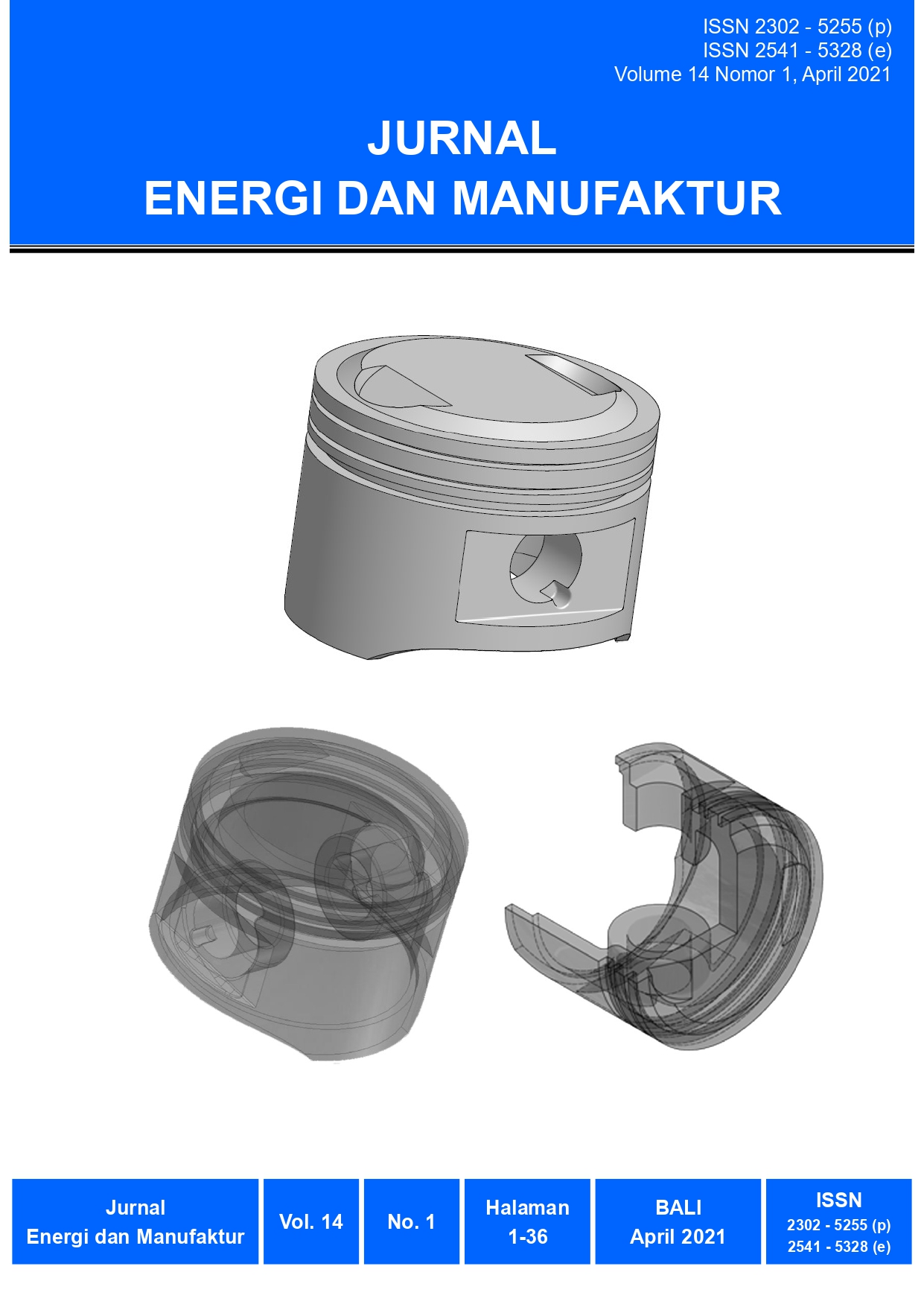Rancang bangun sistem penangkap sampah Daerah Aliran Sungai (DAS) berbasis integrasi screw conveyor dan sistem pemantauan menggunakan Internet of Things (IoT)
Abstract
Waste material flowing in rivers creates several problems in various aspects, especially in environmental aspects. One of the waste-capturing mechanisms which is widely applied is the trash rack. However, studies show that trash racks have the potential to block river flow which increases the risk of flooding. This study proposes a screw conveyor-based waste capturing mechanism with a modification of the blade’s design resembling a trash rack and integrated with monitoring system using the internet of things. The research was conducted through three methods of virtual prototyping, the CAD (Computer-Aided Design) design method through calculation of machine elements and 3-dimensional design process using Autodesk Inventor Professional 2018 software, the design analysis method which includes computational fluid dynamics analysis and three-dimensional stress analysis using ANSYS software, as well as methods for designing and testing monitoring systems using the open-source NodeMCU board and Google Firebase real-time database. The result obtained from this research are the design and specifications of screw conveyor components, v-belt transmission systems, ball contact bearings, and electric motors with a waste-capturing capacity of 0.368 m3/s. The results of the design validation show that the velocity of water flowing through the design geometry is not significantly reduced and the design is able to withstand a combination of self-load and pressure loads due to water flow. The monitoring website has been able to display real-time sensor-acquired data.
Downloads
References
[2] J.-J. Dethier, “Trash, Cities, And Politics: Urban Environmental Problems in Indonesia,” Indonesia, vol. 103, no. 103, pp. 73–90, 2017.
[3] J. Blanc, “An analysis of the impact of trash screen design on debris related blockage at culvert inlets,” Heriot-Watt University, 2013.
[4] M. Zayed, A. El Molla, and M. Sallah, “An experimental study on angled trash screen in open channels,” Alexandria Eng. J., vol. 57, no. 4, pp. 3067–3074, 2018, doi: 10.1016/j.aej.2018.05.005.
[5] United Nations, “TRANSFORMING OUR WORLD: THE 2030 AGENDA FOR SUSTAINABLE DEVELOPMENT,” 2015. doi: 10.1201/b20466-7.
[6] J. M. Tsikata, C. Katopodis, and M. F. Tachie, “Experimental study of turbulent flow near model trashracks,” J. Hydraul. Res., vol. 47, no. 2, pp. 275–280, 2009, doi: 10.3826/jhr.2009.3381.
[7] R. T. Steindorf, “TRASH REMOVING MECHANISM FOR WATER SCREENS,” US1912020, 1933.
[8] S. Riyanto, R. Kurnianto, H. S. Putra, and F. E. Harianto, “Rancang Bangun Inntopes (Innovation Tools Pengangkat Sampah) Pada Aliran Sungai,” Pelita - J. Penelit. Mhs. UNY, vol. 11, no. 1, pp. 112–125, 2016.
[9] A. C. Lind and G. W. Quast, “WASTE-FLOW SCREENING APPARATUS,” US2929504, 1960.
[10] M. D. Irawan, I. D. M. O. Dharmawan, P. B. Sudarsana, and I. D. G. A. Subagia, “DESAIN DAN PERANCANGAN KINCIR SEKRUP OTOMATIS (CIRRUPTIS) UNTUK MENANGKAP SAMPAH PADA DAERAH ALIRAN SUNGAI,” in Konferensi Nasional Engineering Perhotelan X, 2019, vol. 1, p. 1.
[11] R. S. Khurmi and J. K. Gupta, A TEXTBOOK OF MACHINE DESIGN, 1st ed. New Delhi: Eurasia Publishing House (PVT.) LTD., 2005.
[12] R. G. Budynas and J. K. Nisbett, Shigley’s Mechanical Engineering Design, 9th Editio. New York: McGraw-Hill, 2011.
[13] A. W. Roberts, “The influence of granular vortex motion on the volumetric performance of enclosed screw conveyors,” Powder Technol., vol. 104, no. 1, pp. 56–67, 1999, doi: 10.1016/S0032-5910(99)00039-X.
[14] G. G. Wang, “Definition and review of virtual prototyping,” J. Comput. Inf. Sci. Eng., vol. 2, no. 3, pp. 232–236, 2002, doi: 10.1115/1.1526508.
[15] M. Okada, E. Nagoshi, and Y. Matsumoto, “SELF-DRILLING SCREW,” US4323326, 1982.

This work is licensed under a Creative Commons Attribution-NonCommercial-ShareAlike 4.0 International License.









